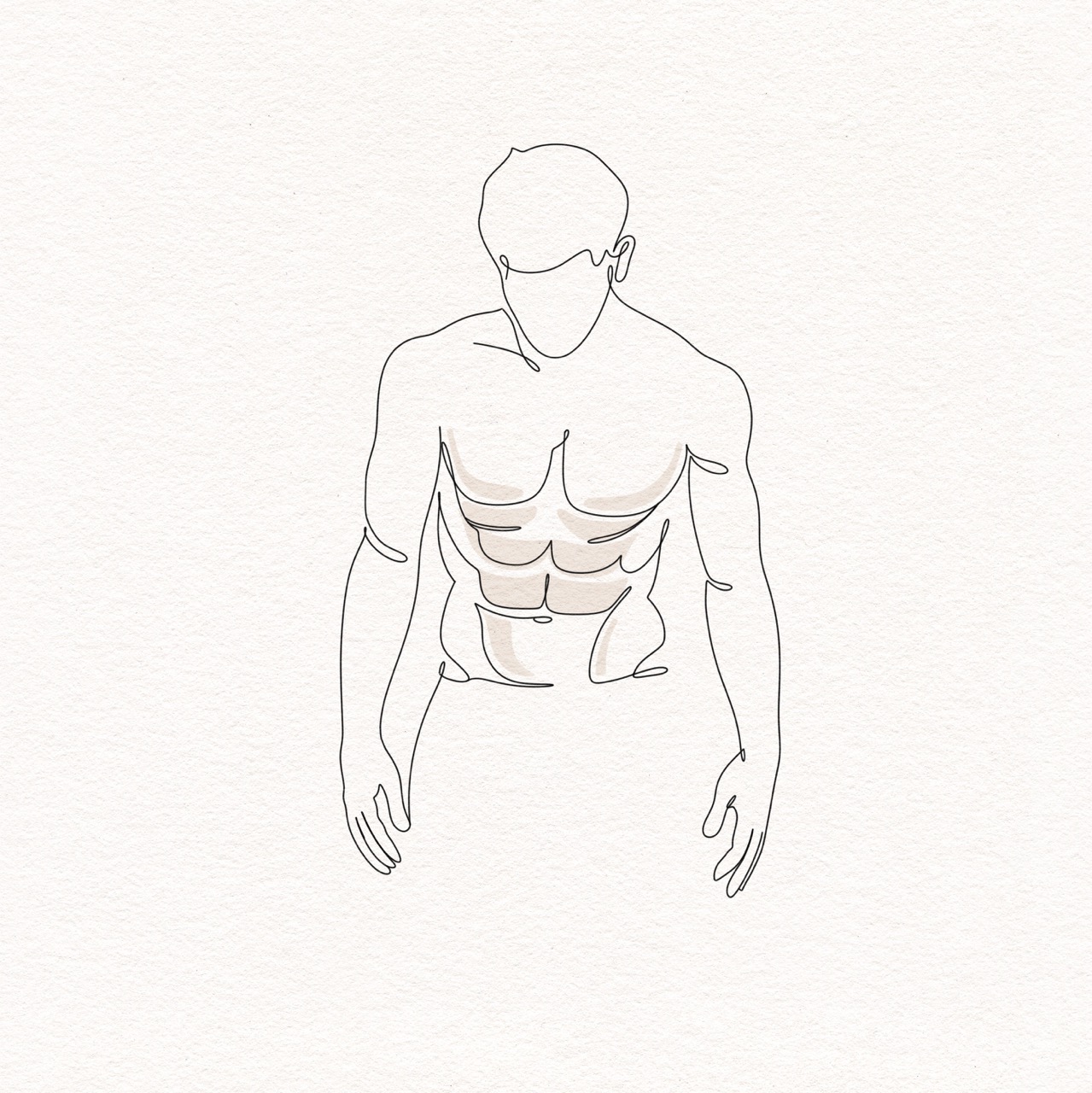Body Contouring for Men
Body contouring for men is a customized approach to reduce stubborn fat, tighten loose skin, and define masculine features—giving you a leaner, stronger silhouette.


Body contouring for men is a set of surgical and non-surgical procedures designed to reshape and define the male physique. Unlike general weight loss, which affects the entire body, contouring targets stubborn areas like the abdomen, love handles, chest, and flanks that are resistant to diet and exercise. Depending on your goals and anatomy, techniques such as liposuction, gynecomastia surgery (male breast reduction), abdominoplasty (tummy tuck), fat transfer, or skin tightening procedures may be recommended. Each plan is tailored to enhance masculine contours and deliver a lean, natural-looking result.
What you need to know
Every procedure and treatment we offer is thoughtfully designed to meet your unique goals, lifestyle, and anatomy. Below, you’ll find key details about what to expect—from how the procedure works to recovery guidance and ideal candidacy—so you can feel informed, confident, and empowered at every step of your journey.
Procedure Time: 1–5 hours depending on areas treated
Anesthesia: Local or general, depending on the procedure
Recovery: 1–3 weeks for most cases
Scarring: Minimal and placed discreetly
Results: Gradual improvement over weeks; final results visible in 3–12 months
Removes stubborn fat from targeted areas like abdomen, flanks, and chest
Sculpts a more athletic, masculine silhouette
Enhances muscle definition
Improves clothing fit and body confidence
May reduce excess skin after weight loss
Customizable to align with personal goals
You may be a good candidate for body contouring if you:
- Are in good overall health and at a stable weight
- Struggle with areas of stubborn fat or loose skin that don’t respond to exercise
- Have mild to moderate skin laxity
- Are bothered by the appearance of enlarged male breasts (gynecomastia)
- Do not smoke or are willing to stop for surgical healing
- Have realistic expectations and a commitment to healthy lifestyle habits

"Dr. Aime and her team provide exceptional care from start to finish. She listens attentively, answers any and all questions, and the results often exceed expectations. The surgical skill and post-operative support are outstanding. I highly recommend Dr. Aime for her expertise and caring approach."
“I recently underwent a submentoplasty procedure performed by the incredibly talented plastic surgeon, Dr Aimé. My decision to have submentoplasty was not taken lightly and Dr Aimé made sure to thoroughly explain the entire procedure to me during our consultation.”
Frequently Asked Questions
We’ve gathered answers to some of the most common questions our patients ask about this procedure. Whether you’re just starting your research or preparing for surgery, this section is here to help you feel informed and confident every step of the way.
Common areas include the abdomen, flanks (“love handles”), chest (especially for gynecomastia), lower back, arms, neck, and thighs. The procedure is highly customizable to target each patient’s unique areas of concern.
While the foundational techniques are similar, male body contouring emphasizes enhancing angular lines, muscle definition, and achieving a more sculpted and athletic appearance. The goal is to preserve or create masculine features while eliminating unwanted fat or loose skin.
Candidacy for body contouring is less about age and more about overall health and physical maturity. Patients must be fully developed, which typically means at least 16 years of age for males. If someone is younger, Dr. Aimé may refer them to a pediatric plastic surgeon for specialized care.
On the other end of the spectrum, men over 50 or those with chronic health conditions (such as high blood pressure, diabetes, or heart disease) can still be candidates, but safety is paramount. For these individuals—especially if surgery will be performed under general anesthesia—Dr. Aimé may request preoperative testing such as bloodwork, an EKG, or clearance from a primary care provider or medical specialist to ensure the procedure is safe.
Ultimately, the ideal candidate is in good health, has realistic expectations, and is pursuing surgery for their own goals, not external pressure.
Yes. Many men choose to combine procedures—such as liposuction with a tummy tuck or gynecomastia surgery—for more comprehensive results. Dr. Aimé will help you decide what combination is safe and best suited to your goals.
No—body contouring is not a weight-loss procedure, and it should not be viewed as an alternative to weight reduction surgery. These procedures are designed to sculpt and refine the body’s shape, focusing on improving proportions and definition, not on lowering the number on the scale.
Many male patients considering body contouring are already close to their goal weight but are struggling with stubborn fat deposits or loose skin that won’t respond to diet and exercise. It’s important to understand that while fat may be removed during procedures like liposuction, this doesn’t equate to significant weight loss.
In fact, it’s not uncommon for men to temporarily gain weight after surgery due to swelling and fluid retention during the early healing phase. Over time, as the body recovers, some patients may lose a few pounds relative to their preoperative baseline. Others feel reenergized and motivated to work out, which can naturally enhance their results and support long-term health.
Ultimately, the goal of body contouring is to refine your physique, not to replace the need for a healthy lifestyle.
Yes—but how much time you’ll need depends on the type of body contouring procedure you’re having and the nature of your job.
If you’re undergoing liposuction alone, many men can return to non-physical work (like desk jobs) within 3–4 days, provided they’re feeling well. However, if your job involves manual labor or heavy lifting (such as construction), a longer recovery period will be necessary.
For more involved surgeries like a tummy tuck (abdominoplasty), at least 2 weeks off is typically recommended. During the first two weeks, it’s important to keep your heart rate and blood pressure within a normal range to avoid complications. Light walking is encouraged right away to promote circulation and reduce the risk of blood clots.
Here’s a general return-to-activity timeline:
- Days 1–14: Light walking only, no elevation in heart rate or blood pressure
- Weeks 2–4: You may begin light exercise (like neighborhood walks), as tolerated
- Weeks 4–6: Moderate activity such as light resistance training or cardio
- After 6 weeks: Most patients may resume strenuous exercise and return to their full routine if healing is progressing well
Dr. Aimé provides personalized recovery guidelines for every patient to ensure a safe, effective return to daily life and physical activity.
Yes—all surgical procedures result in some form of scarring, but the goal is to make them as discreet and well-placed as possible.
The location and visibility of scars depend on the specific procedure. For example, incisions for liposuction are typically small and placed in hidden creases or beneath the waistband, while a tummy tuck will involve a longer scar that I intentionally place low on the abdomen, so it’s easily concealed under clothing or swimwear. In some cases, such as male chest contouring, incisions are hidden along the natural borders of the areola or in hair-bearing areas when possible.
Dr. Aimé makes every effort to:
- Place incisions strategically based on your anatomy, goals, and clothing preferences
- Involve you in the planning so scar placement aligns with your comfort and lifestyle
- Use meticulous surgical technique to minimize scar thickness and irregularity
- Guide you through post-operative scar care, including topical treatments or silicone therapy, to help optimize healing
While scars can’t be avoided entirely, the combination of thoughtful planning, technical precision, your genetics, and consistent aftercare plays a huge role in how they ultimately look.
The fat cells that are physically removed during body contouring procedures like liposuction or excisional surgery (e.g., tummy tucks, gynecomastia correction) are permanently eliminated from that specific area. The number of fat cells in the treated region is significantly reduced and does not regenerate at the original site.
However, the body is dynamic. While fat doesn’t grow back in the treated area, it can compensate by enlarging the remaining fat cells elsewhere (hypertrophy) or even generate new fat cells (adipogenesis) in untreated areas. This means if there is significant weight gain, the fat is likely to redistribute to other areas—such as the abdomen, back, or arms—rather than the site that was treated.
Think of it like a “path of least resistance”: once a zone has fewer fat cells, the body looks for other places to store excess energy. This is why maintaining a stable weight is key to preserving your surgical results.
It’s also important to understand that while fat removal is permanent, aging continues. Skin elasticity, hormone shifts, and metabolic changes may affect your appearance over time. But with a healthy lifestyle, most patients enjoy long-lasting, satisfying results.
Backed by published research: Studies show that while liposuction permanently reduces fat in the treated area, total body fat can return to baseline over time—just not in the same place. This restoration occurs via hypertrophy (enlargement) and adipogenesis (new fat cells) in non-excised fat depots (Hernandez et al., Obesity, 2011; Cypess, NEJM, 2022).
You’ll notice initial changes within a few weeks, but final results typically take 6-12 months as swelling resolves and the body fully heals and adapts to its new shape.
Ready to start your transformation?
Whether you’re just beginning to explore your options or have specific goals in mind, we’re here to guide you with expertise and compassion.

Read more articles

Face & Neck Rejuvenation for Men
Discover tailored solutions for men seeking a more youthful, confident appearance. Our Face & Neck Rejuvenation for Men services focus on enhancing masculine features while addressing visible signs of aging. Explore surgical and non-surgical options designed to deliver natural-looking results that help you look as strong and vital as you feel.

Gynecomastia
Male chest contouring, also called gynecomastia surgery or male breast reduction, removes excess fat and glandular tissue to sculpt a flatter and more masculine chest.














